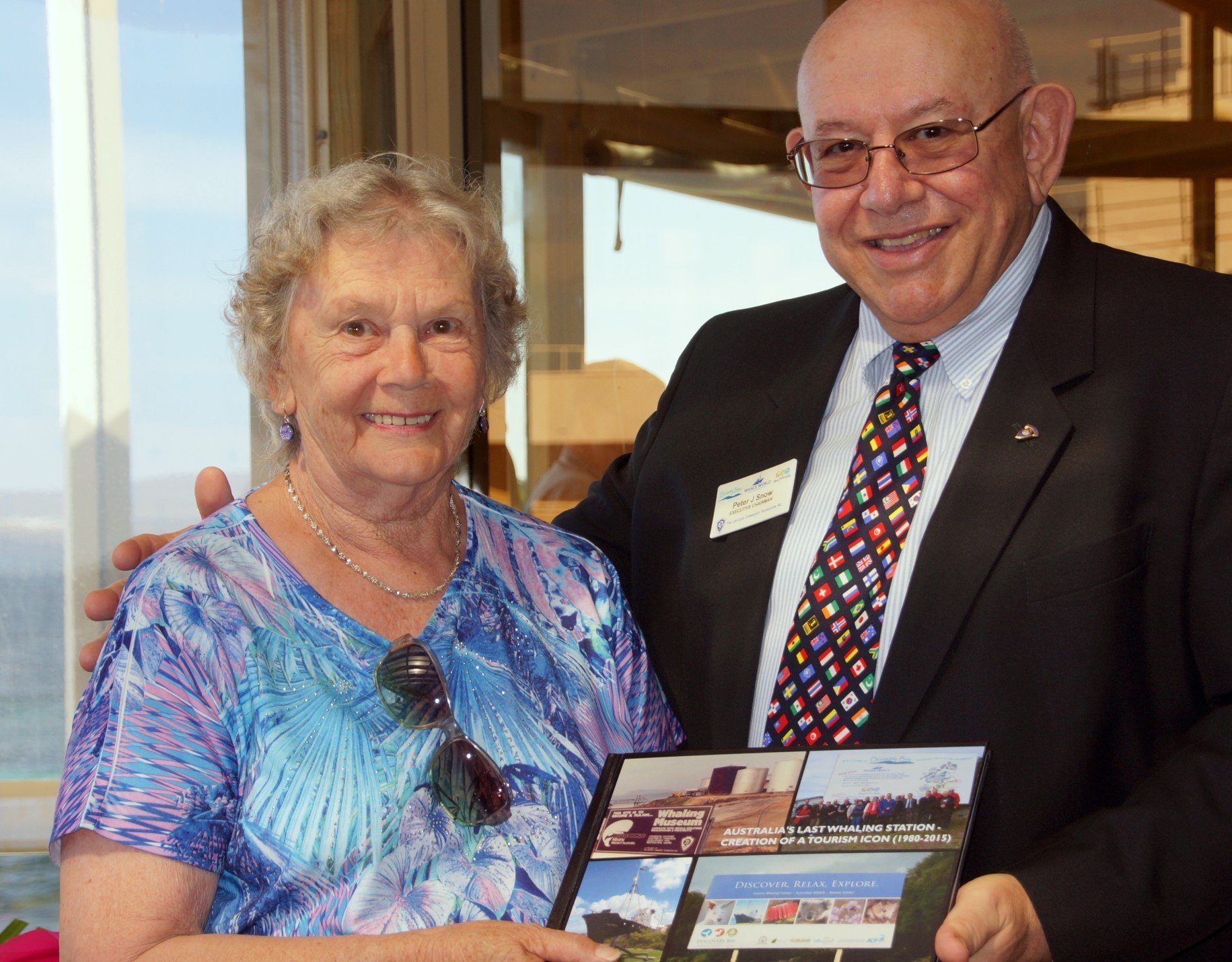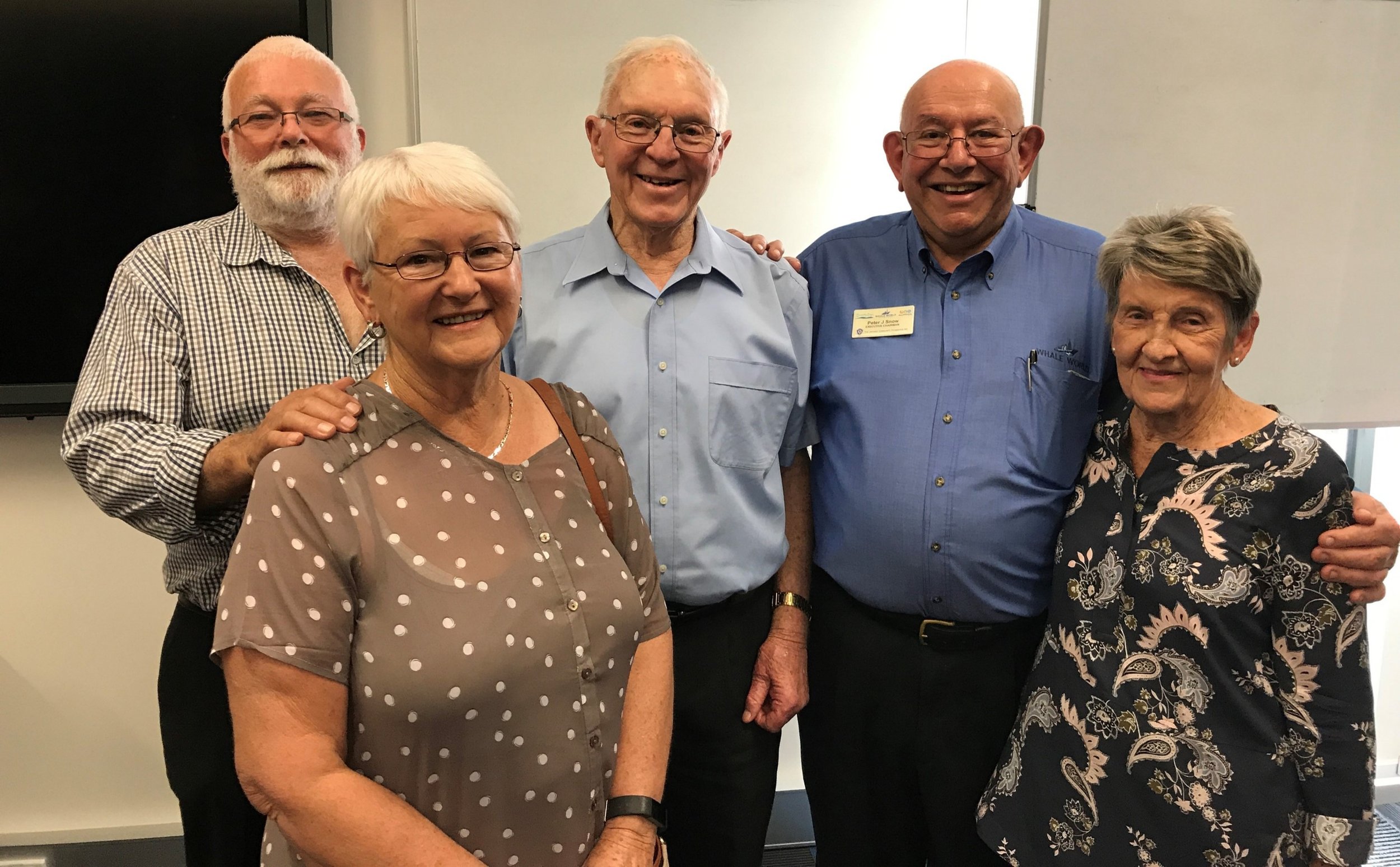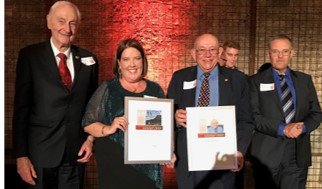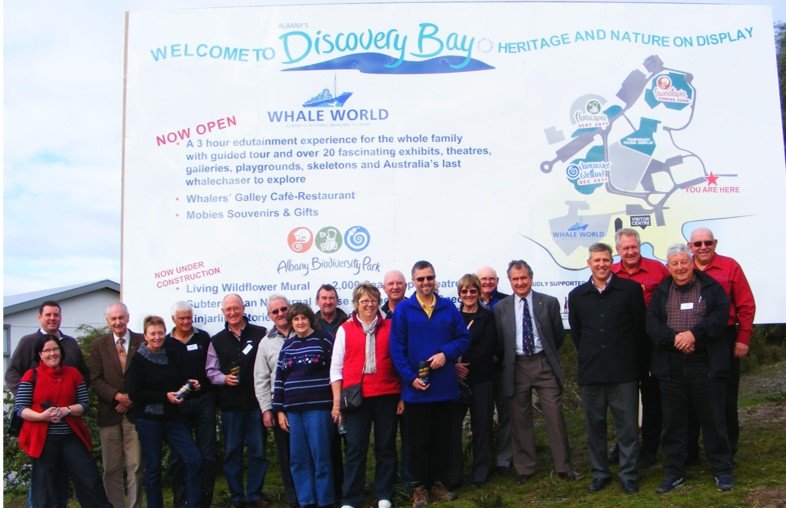Peter Snow
By Chris Martain & Tom Warner
On 21st November 1978 the closure of Albany’s Whaling Station signaled the end of the whaling industry in Australia. On 26th December 1980, it re-opened as Whale World, allowing visitors to explore the site and learn about Australia’s whaling history. Now, in 2023, it is one of the region’s most popular heritage tourist attractions which, post-Covid, attracts over 60,000 visitors annually. Chris and Tom sat down for a coffee with Peter Snow OAM, former Chair of The Jaycees Community Foundation Inc (now known as Albany Heritage Foundation Inc) to learn the story of how this came to be.
In 1976, Australian Jaycees comprised of hundreds of chapters undertaking various community projects. Peter and then State President Ron Raynor, co-founded The Jaycees Community Foundation and brought together senior Jaycees to undertake larger and longer-term projects. The Foundation started with some small projects - Royal Flying Doctor landing lights in Morawa, construction of a children’s playground, and pioneered computerised medical alert systems in Western Australia.
What about a whaling Station?




However, a chance meeting in 1979 that would see the Foundation take on its biggest and longest running project. While working in Queensland in 1979, Peter bumped into Colin Green of Harvey Beef, whose family company owned the Cheynes Beach Whaling Company, which had recently closed. Over dinner, discussion turned to the two remaining Whale Chasers. Peter had the idea of finding a donor of $6,000 to buy one of the ships and moor it in the Swan River as a $2 a visit fundraiser to board and inspect a Whale Chaser. Colin liked that plan and offered to gift one of the ships to the Foundation. Discovering that fuel and crewing would be $30,000 and needing a $1 million insurance bond against it sinking in transit to Perth, Colin’s Finance Director was not keen to proceed. “What about the whaling station?” he asked. “Why not?” was Peter’s response, and that’s how, The Jaycees Community Foundation was gifted Australia’s last derelict whaling station. Rezoning and other red tape delayed the Foundation’s ownership until 15th December 1980, and Whale World opened to its first visitors 11 days later, on 26th December 1980.
A management agreement with the whaling station’s former pilot John Bell and his wife, operated for the next 16 years until John’s tragic and untimely death. In this time the 20 ha site underwent massive change as it was converted from a derelict industrial site into a functional heritage tourist attraction. The two whale chasers needed to be relocated from Town Jetty due to rising mooring costs. The Cheynes 3’s unique triple-expansion steam engine was restored and displayed and the hulk scuttled and is still in use as a diving practice wreck.
Due to the absence of tenders, John Bell towed the Cheynes 4 to the site and, using bulldozers and a purpose-built lock moved the ship its current location alongside the whale oil tanks.
The Jaycees Community Foundation then pioneered the Community Employment Program in WA providing 6 month’s work for 56 long-term unemployed enabling construction of the entrance building and restoration of many of the site’s buildings and equipment. Cost over-runs required the Foundation’s Board to personally guarantee a Development Bank loan of $180,000 at 24% (yes, 24%) interest.
Another Chance Meeting
Returning from the 1984 Jaycees World Congress in Montreal, where the Foundation received the World Award for the Most Outstanding Project by a Group of Jaycees, Peter had another chance meeting with Richard Ellis, a renowned marine artist. Richard’s collection of 106 marine mammal paintings were coming off a Smithsonian Institute tour of the Americas and needed a new home. Peter’s entrepreneurial spirit again kicked in, securing a three-month option to purchase the collection for Whale World. The late Kevin Parry funded the acquisition and the fit-out of the Parry Gallery.
A Name With Some Meaning
After John Bell’s death, Les Bail agreed to help as manager for 3-months. He remained for 13 years, ultimately oversing the development of the Albany Biodiversity Park as part of a bigger vision. The site’s name was changed to Discovery Bay acknowledging the 1791 mooring by the Discovery to allow Captain George Vancouver and his crew to draw fresh water from the site.
The whaling station was rebranded from Whaleworld to Albany’s Historic Whaling Station.
Discovery Bay Tourism Precinct Ltd is now chaired by former General Manager Glenn Russell, who succeeded Les Bail. The site now consists of the whaling station, Australian Wildlife Park with Walken Djet living floral mural and grassed amphitheatre. It has continued to grow and add artifacts and create exhibits including the Hilda Hotker Shell Collection, the Colin Green Gallery housing the Ed Smidt 56 photo collection of the final 8 years of whaling, whale skeleton displays, and most recently, the Art of Scrimshaw exhibit. This features the work of Gary Tonkin, regarded as the world’s greatest living scrimshander. The exhibit centrepiece is the jawbone and 22 teeth of one of the largest whales caught by the whaling company and displays Gary’s extraordinary talent.
Since opening in 1980, Whale World has hosted over two and a half million visitors and contributed more than forty million dollars to the local economy. Peter’s work with the Jaycees Community Foundation on this project saw him awarded an Order of Australia Medal for service to the community of Albany. When we asked him what drives him to be involved with community work, he told us “It’s about the challenge, not the money. It’s about the people, and the legacy you leave”. In the preservation of a significant part of Albany’s history, and the provision of an outstanding tourist attraction, Peter and the Jaycees certainly have left a legacy in Albany.

